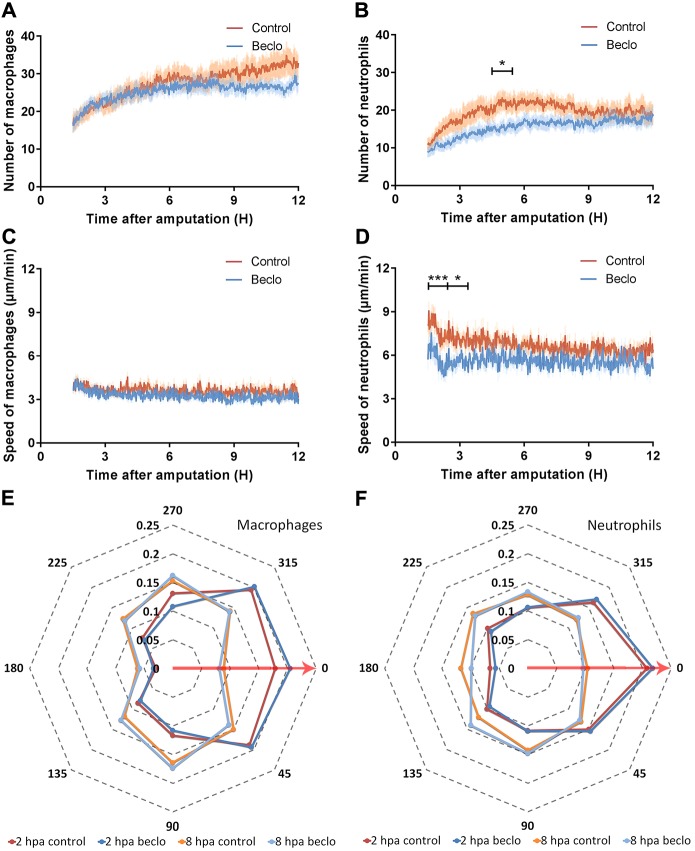Fig. 2.
Live imaging and tracking of migrating macrophages and neutrophils upon tail amputation. (A-B) The number of macrophages (A) and neutrophils (B) recruited to the wounded area from 1.5 hpa to 12 hpa in 3 dpf larvae in the vehicle-treated group (Control) and the beclomethasone-treated group (Beclo). No significant difference was observed for the number of recruited macrophages. A significantly reduced number of neutrophils were recruited in the beclomethasone-treated group compared to the control group at 5 hpa. Data are mean±s.e.m. from 10 larvae. *P<0.05 (determined on data averaged per hour using ANOVA with a Fisher's LSD post hoc test). (C-D) The velocity of macrophages (C) and neutrophils (D). No significant difference was observed for the velocity of macrophages. At 2 and 3 hpa, the velocity of neutrophils in the beclomethasone-treated group was significantly lower than the velocity in the control group. Data are mean±s.e.m. from 10 embryos. *P<0.05; ***P<0.001 (determined on data averaged per hour using ANOVA with a Fisher's LSD post hoc test). (E-F) The directionality of recruited macrophages (E) and neutrophils (F) at 2 hpa and 8 hpa. The circular x-axis indicates the different angles made by cells, classified into eight categories. Category 0 represents the direction towards the wound (including angles between 22.5 to −22.5°, shown by the red arrows). The y-axis indicates the size of the fraction of cells occurring within a category in that hour. Statistical analysis was performed using the Kolmogorov–Smirnov test. No difference was observed between the control and beclomethasone-treated groups. Data are mean from 10 embryos.

